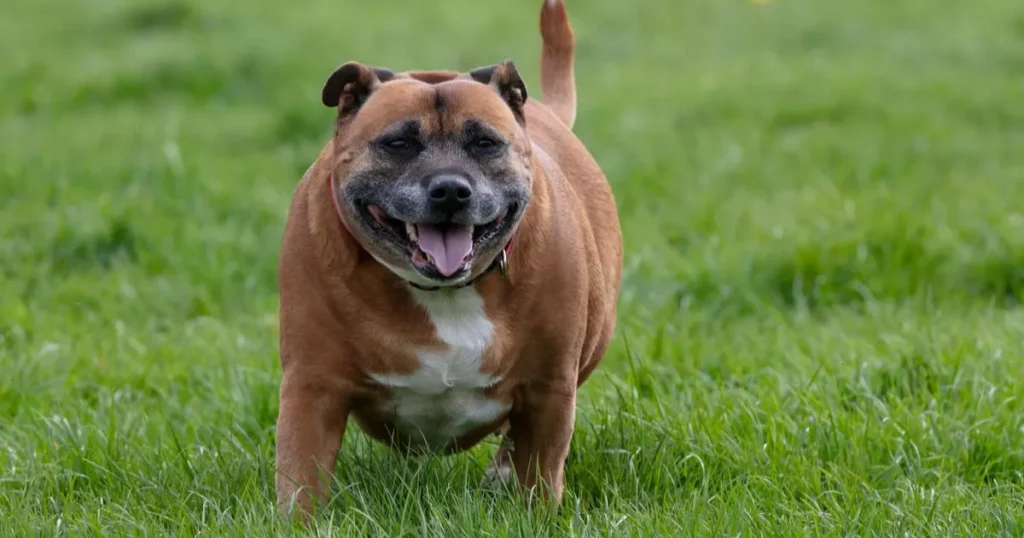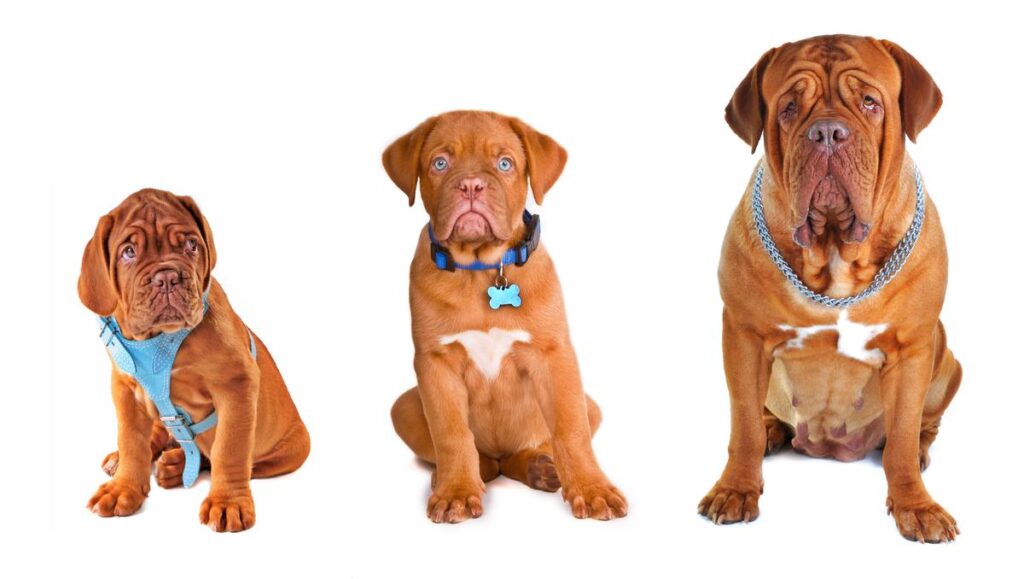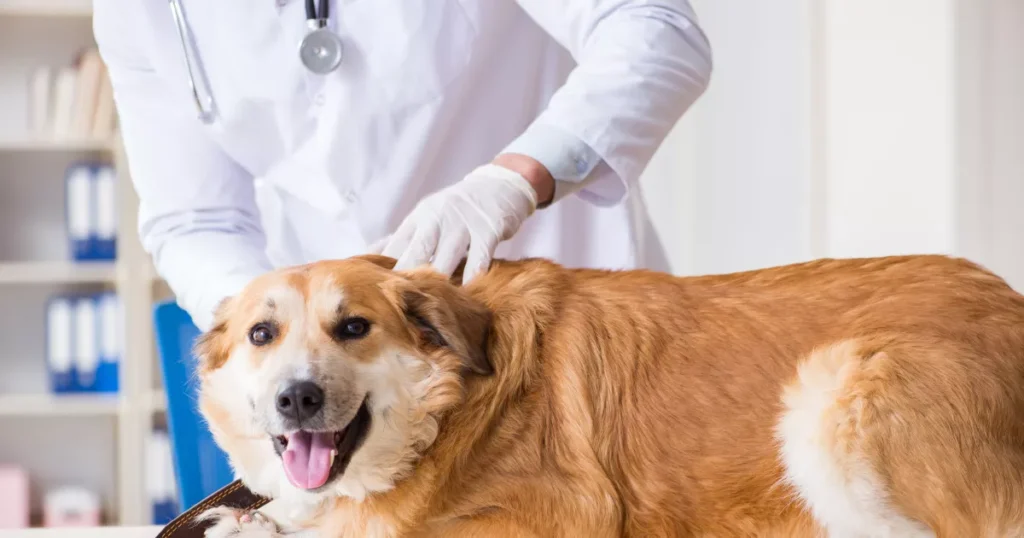The quintessential American dream often includes a white picket fence, a home, and a wagging tail greeting us as we return from a hard day’s work. Dogs are not just pets; they’re family. As we strive to ensure their happiness and comfort, we must also recognize and address a growing health concern: obesity in dogs.
This burgeoning issue is becoming increasingly common, and understanding its causes and repercussions is vital for every dog parent.

Causes of Obesity in Dogs
1. Overeating and Under-exercising

Overindulgence: We’ve all been guilty of sneaking an extra treat (or two) to our pets. These moments of indulgence, driven by affection, can gradually contribute to excess calorie intake. A dog biscuit here, some table scraps there – it all adds up.
Misunderstanding Dietary Needs: Not all dog foods are created equal. Different brands and types have varying caloric contents. It’s essential to read labels and measure portions to prevent overfeeding.
Physical Activity: The sedentary lifestyle of many urban dogs mirrors that of their owners. With increasing urbanization, dogs often lack open spaces to run and play freely. Coupled with the comfort of modern living, many dogs spend their days lounging rather than being active.
2. Breed Predispositions

Genetic Factors: Some breeds are genetically predisposed to obesity. Their metabolic rate, food drive, or activity levels might be different from other breeds, making weight management a challenge.
Selective Breeding: Humans have selectively bred dogs for specific traits. For instance, retrievers were bred to have a strong food drive, as they needed to retrieve game. This strong food motivation can sometimes work against them in modern settings where food is abundant but physical activity is limited.
3. Aging

Slower Metabolism: Just as in humans, the metabolic rate in dogs tends to decrease as they age. This means they burn fewer calories at rest, and even during activity, than their younger counterparts.
Physical Limitations: Arthritis, reduced stamina, or simply the aches and pains that come with age can limit an older dog’s enthusiasm or ability for exercise. However, without adjusting food intake to match this reduced energy expenditure, weight gain is inevitable.
4. Medical Conditions

Hypothyroidism: This condition occurs when the thyroid gland doesn’t produce enough thyroid hormone, slowing down the metabolism. Symptoms might include lethargy, hair loss, and, of course, weight gain.
Cushing’s Disease: A condition where the body produces too much cortisol – a stress hormone. This can lead to increased appetite, muscle wastage, and fat accumulation, especially around the abdomen.
5. Effects of Neutering/Spaying

Metabolic Changes: Neutering or spaying a dog removes its reproductive organs, which play a part in hormone production and regulation. The resulting hormonal changes can lead to decreased energy needs, yet the appetite remains unchanged, leading to weight gain.
Activity Levels: Some studies have suggested that neutered or spayed dogs might be less active than intact dogs. While the reasons aren’t entirely clear, reduced physical activity obviously plays into the hands of obesity.
Consequences of Obesity in Dogs
Pet obesity is not a mere cosmetic issue; the implications run far deeper. Here’s an in-depth look at the significant consequences that obesity brings into the lives of our canine companions:
1. Grave Health Concerns
Diabetes Mellitus: Obesity makes dogs more resistant to insulin, a hormone that helps regulate blood sugar. Without proper insulin function, sugar builds up in the bloodstream, leading to diabetes. This condition demands constant management and can significantly reduce the quality of a dog’s life.
Heart Diseases and Hypertension: Excess weight puts more strain on the heart. Over time, the heart muscles work harder to pump blood, leading to issues like enlarged heart, decreased stamina, and even heart failure. Alongside, the increased blood volume in obese dogs results in higher blood pressure (hypertension), damaging other organs like the kidneys and eyes.
Urinary Bladder Stones: Being overweight can lead to the formation of bladder stones, formed by minerals in the urine. These stones can cause pain, blood in the urine, and may require surgical removal.
2. Exacerbation of Existing Conditions
Respiratory Distress: Obese dogs often have excess fat deposits around their lungs, making it harder for the ribcage to expand and thus affecting the breathing process. For a dog already struggling with respiratory conditions, additional weight exacerbates the issue, making every breath more laborious.
Amplifying High Blood Pressure: For dogs already diagnosed with hypertension, added weight strains their system further. High blood pressure can lead to a plethora of secondary issues, such as kidney diseases or even blindness.
3. Reduced Quality of Life
Physical Limitations: The sheer weight an obese dog carries around can hinder its movement. Simple pleasures like chasing a ball, going for walks, or even climbing stairs can become arduous tasks.
Mental and Emotional Impact: Dogs are naturally active and playful creatures. When physical limitations curb these instincts, it can lead to feelings of frustration. Just like humans, dogs too can experience depression and anxiety when they’re unable to engage in activities they enjoy.
4. Shortened Lifespan
Increased Disease Susceptibility: Beyond the immediate health concerns, obesity compromises the immune system, making dogs more susceptible to infections and diseases.
Overall Strain on the Body: Excess weight puts undue strain on almost every organ in the dog’s body. From the heart to the liver, from the joints to the lungs, every part works overtime to support the extra weight.
Premature Aging: The compounded effect of all these issues accelerates the aging process. An obese dog is likely to show signs of aging, such as reduced activity, greying fur, and more frequent health issues, much earlier than its leaner counterparts.
In Conclusion
The bond between humans and their dogs is sacred. As guardians of their well-being, it’s our responsibility to ensure they lead a healthy, happy life. This includes maintaining an optimal weight for our pets. If you ever find yourself wondering if your dog is edging towards obesity, reach out to your veterinarian. They can offer guidance tailored to your dog’s needs, from dietary advice to suitable exercise routines. After all, a healthy dog is a happy dog, and a happy dog means a joyful home.
Frequently Asked Questions
What are some ways to prevent obesity in dogs? Preventing obesity in dogs requires a holistic approach. Here are some steps to consider: - Balanced Diet: Feed your dog a balanced, high-quality dog food appropriate for their age, size, and activity level. Avoid overfeeding and stick to recommended portion sizes. - Limit Treats: Treats should only make up 10% of your dog's daily caloric intake. Opt for healthier treat choices or use vegetables like carrots or green beans as low-calorie options. - Regular Exercise: Ensure your dog gets regular physical activity tailored to their breed and age. This could be in the form of walks, play sessions, or agility training. - Routine Vet Checkups: Regular vet visits can help catch weight gain early and adjust feeding guidelines as needed. - Monitor Weight: Weigh your dog periodically to track any significant changes in weight.
How does obesity affect a dog's quality of life? Obesity can significantly diminish a dog's quality of life. Excess weight can lead to physical discomfort, reduced mobility, and increased susceptibility to various diseases. Obese dogs may find it difficult to partake in activities they once enjoyed, leading to mental and emotional stress, including depression or anxiety.
Are there any breed-specific factors that contribute to obesity in dogs? Yes, certain breeds are more prone to obesity due to genetic predispositions. For instance, Labrador Retrievers, Beagles, and Cocker Spaniels often have a natural inclination toward weight gain. These breeds may have a slower metabolism, increased appetite, or tendencies to be less active. However, it's essential to remember that any dog, regardless of breed, can become obese without proper care and preventive measures.
How can I determine if my dog is overweight or obese? While a vet is the best person to assess your dog's weight accurately, there are a few signs you can look for: - Rib Check: You should be able to feel your dog's ribs without pressing too hard, but they shouldn't be visibly protruding. - Waistline: When viewed from above, dogs should have a noticeable waist behind their ribs. If the waist is absent or very minimal, your dog might be overweight. - Abdominal Tuck: From a side view, the abdomen should appear slightly tucked up behind the ribcage. If you suspect your dog might be overweight, consult with your veterinarian.
How does neutering or spaying affect a dog's likelihood of becoming obese? Neutering or spaying can lead to hormonal changes that might decrease a dog's metabolic rate and reduce their overall physical activity. While these procedures have various health and behavioral benefits, dog owners should be aware of the potential for weight gain post-surgery and adjust their dog's diet and exercise routines accordingly.
Is it possible for my dog to lose weight if they are already obese? Absolutely. With a veterinarian-approved diet and exercise plan, most obese dogs can lose weight and achieve a healthier size. It's important to approach weight loss gradually and consistently, monitoring your dog's progress and adjusting their regimen as needed.